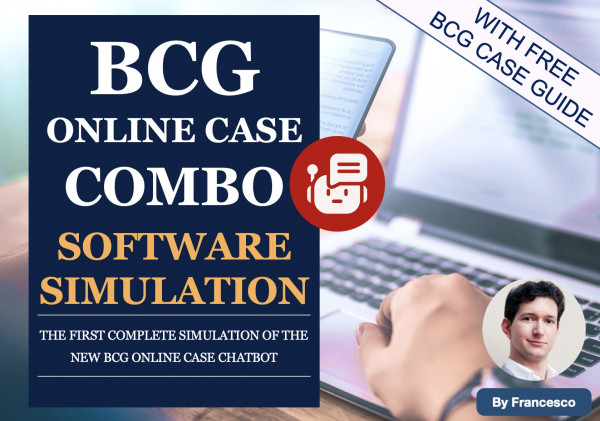A live dinosaur has just been found in Africa, How can the governement make a use of it for profit?
how you would make a structure for this case


Thank you for the interesting case! I would approach it in the following way:
Assess the feasibility: Determine the scientific and logistical feasibility of capturing and transporting the live dinosaur. This includes evaluating the safety measures, expertise required, and potential risks involved.
Identify potential revenue streams: Explore different ways the government can generate profit from the live dinosaur. This could include:
a. Tourism: Assess the potential for creating a dinosaur-themed tourist attraction, such as a dinosaur park or museum, to attract visitors and generate ticket sales and merchandise revenue.
b. Research and education: Explore partnerships with scientific institutions and universities to conduct research on the dinosaur, potentially leading to scientific discoveries and publications. Additionally, consider the possibility of offering educational programs or workshops related to the dinosaur.
c. Licensing and merchandising: Investigate opportunities to license the dinosaur's image or likeness for merchandise, such as toys, clothing, or souvenirs, which can generate additional revenue.
Evaluate infrastructure and resources: Assess the existing infrastructure and resources required to support the chosen revenue streams. This includes considering the need for facilities, staff, marketing efforts, and partnerships with relevant stakeholders.
Analyze potential risks and challenges: Identify and address potential risks and challenges associated with the use of the live dinosaur. This could include legal and ethical considerations, environmental impact, public safety concerns, and potential backlash from certain groups.
Develop a financial plan: Create a financial plan that outlines the projected costs, investments, and expected returns from each revenue stream. This will help determine the profitability and sustainability of the government's use of the live dinosaur.
Remember, this is just a high-level structure to guide your analysis. As you dive deeper into each area, be sure to consider additional factors and adapt your approach based on the specific details and context of the case.
I hope this helps, and let me know if you have any further questions!

You're not making great use of this Q&A :)
If you want example answers you could just feed this to ChatGPT.
Instead, take five minutes and come up with a suggested approach and this way we can give you tailored feedback, which means that we can actually add value.
Nevertheless, cool prompt.
Good luck!
Cristian

Hi there,
Framework 1
Cost-Benefit-Implementation
Framework 2
Social-Political-Economic-Environmental
Framework 3
Physical (dinosaur itself) - Products (merchandise) - Virtual (marketing, branding, games, itself)
Here's some reading to help: https://www.preplounge.com/en/articles/how-to-shift-your-mindset-to-ace-the-case
Frameworks
If there's anything to remember in this process, is that cases don't exist just because. They have come about because of a real need to simulate the world you will be in when you are hopefully hired. As such, remember that they are a simplified version of what we do, and they test you in those areas.
As such, remember that a framework is a guide, not a mandate. In the real-world, we do not go into a client and say "right, we have a framework that says we need to look at x, y, and z and that's exactly what we're going to do". Rather, we come in with a view, a hypothesis, a plan of attack. The moment this view is created, it's wrong! Same with your framework. The point is that it gives us and you a starting point. We can say "right, part 1 of framework is around this. Let's dig around and see if it helps us get to the answer". If it does, great, we go further (but specific elements of it will certainly be wrong). If it doesn't, we move on.
So, in summary, learn your frameworks, use the ones you like, add/remove to them if the specific case calls for it, and always be prepared to be wrong. Focus rather on having a view, refering back to the initial view to see what is still there and where you need to dive into next to solve the problem.
HOW to learn/think in the right way.
- Frame based on the objective: Identify exactly what the objective is, then think about the areas you would look at to solve the problem.
- Think of buckets as "building blocks" - understand the 10-odd buckets that exist out them (Market, Product, Company, How to Enter, etc.). Learn these, and what their used for, then think of them as ingredients that you then pluck out and tailor to your framework.
- Practice with Introduction, then End, then framework:
- Practice a number of cases where you hear just the introduction, then build a framework.
- THEN, look at the end of the case and what conclusion was made, and re-do your framework.
- THEN, look at what framework(s) was/were proposed as the answer.
- Read the Economist religiously: The Economist is an excellent, longer-term base knowledge/thinking resource for you. I've found that reading the Economist over the years has been instrumental in helping to shape my thinking and holistically understand problems, whether political, economic, social, or anything in between. Feel free to throw in the Financial Times or BCG Insights into the mix!

That's a brainstorming question. Meaning that the structure is more around the potential categories of revenue than anything else.
Sure, you can do a full structure: 1) look at potential revenue opportunities (e.g. tourism vs. non-tourism revenue); 2) compare them looking by using a cost-benefit analysis (and also considering if multiple uses can be combined together) which can consider economic and non-economic factors.
P.S. Birds are actually dinosaurs! :)

Cristian has a fair point here. Anyway, happy to share some ideas. Depending on whether you are asked how to approach this (signal for structure) or what ideas you have (signal for brainstorming) you may need to bucket it like Ian suggested.
- Tourism and Cultural Heritage
- Media and Merchandising
- Scientific Research and Education
- Environmental Conservation
Warm regards,
Freddy














